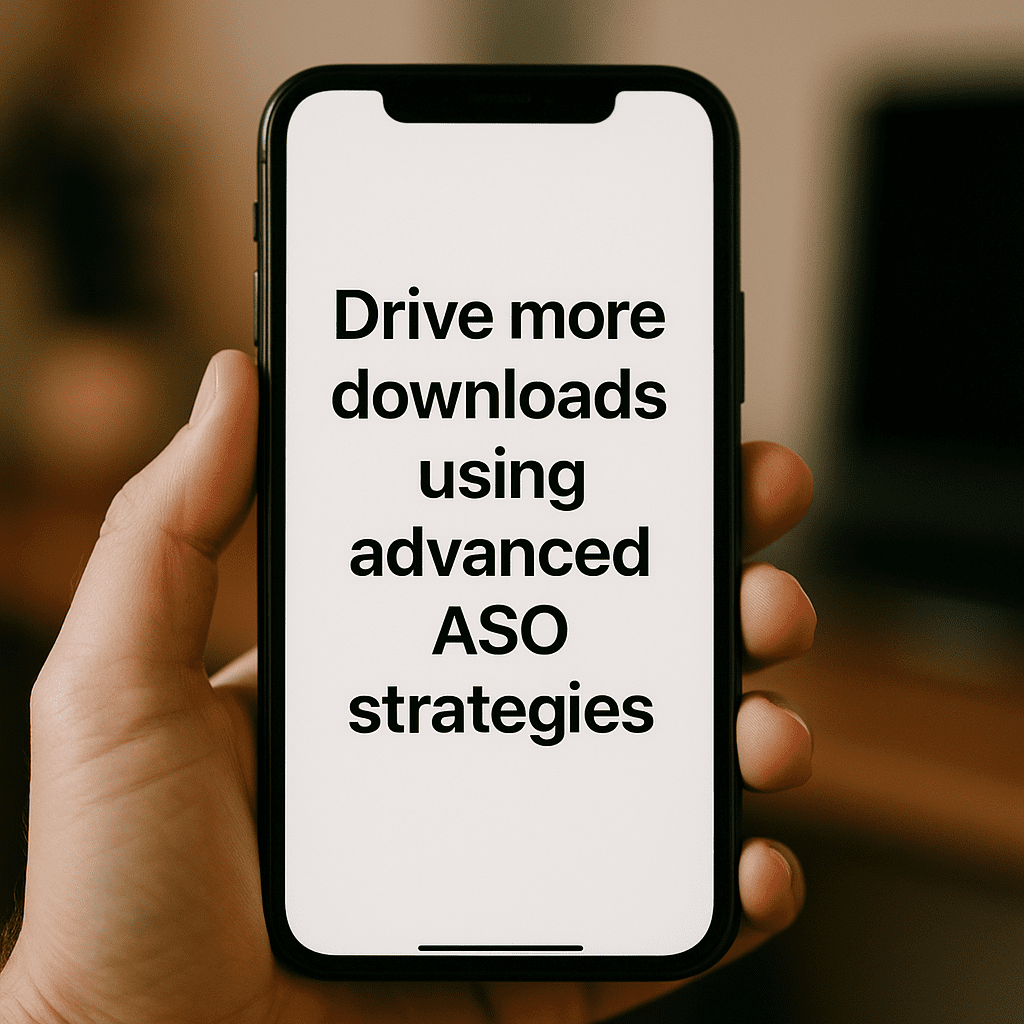
Drive More Downloads Using Advanced ASO Strategies: A Comprehensive Step-by-Step Guide
In an ecosystem with over 2.5 million apps vying for attention on the Apple App Store and Google Play, App Store Optimization (ASO) is no longer optional—it’s essential. For mobile app marketers, growth managers, and performance teams, ASO offers a data-driven framework to boost visibility, lower acquisition costs, and secure quality users organically. This guide, crafted from the vantage point of a top app growth agency CMO, walks you through foundational tactics and advanced techniques that deliver measurable lifts in downloads and engagement.
What Is ASO and Its Role in App Growth?
ASO encompasses all activities that improve your app’s discoverability and conversion rate within app store search and browse experiences. It mirrors SEO for websites but with mobile-specific ranking factors such as app title, keyword relevance, visual assets, and user feedback. Effective ASO aligns with your broader growth strategy—across paid acquisition, retention campaigns, and analytics—to maximize return on ad spend (ROAS) and lifetime value (LTV).
- Lower acquisition costs by boosting organic installs.
- Inform ad creative with high-performing keywords and visuals.
- Improve post-install retention by setting accurate expectations in store listings.
Foundational ASO: Metadata and Keywords
App Title and Subtitle
Your App Title is prime real estate for high-impact keywords. Integrate your top one or two target terms naturally, ensuring the title reflects your core value proposition. On iOS, your subtitle offers an extra 30 characters to reinforce key benefits—think “Secure Mobile Banking” or “On-Demand Fitness Coach.” On Google Play, the title carries more weight, so prioritize clarity and relevance.
Keywords Field (iOS)
Apple’s hidden Keywords Field (100 characters) is a dedicated slot for additional search terms. Use a mix of short-tail (e.g., “photo editor”) and long-tail phrases (e.g., “portrait lighting effects”) without spaces or commas—simply separate with commas. Remove low-volume or duplicate terms each quarter to free up space for emerging opportunities.
App Description (Android & iOS)
While the iOS description has limited direct ranking impact, it influences user conversion. On Google Play, the first 125 characters are indexed and displayed above the fold. Craft a compelling, benefit-driven opening and weave in your highest-priority keywords naturally. Follow with a clear outline of features, social proof (awards or press mentions), and a call to action (CTA) like “Start your free trial today.”
Visual Assets Optimization
Icon Design
Your App Icon is the first signal to users—and it must stand out at multiple sizes. Test bold color contrasts, simple shapes, and a distinct focal point that aligns with your brand. Avoid overcrowding with text or details that blur at smaller resolutions.
Screenshots and Captions
Screenshots account for up to 34% of a conversion lift when optimized correctly. Highlight your app’s core flows and most compelling features in the first three frames. Use short, action-oriented captions like “Track Budgets in Seconds” or “Join Live Workouts.” Consider designing device-mockup backgrounds to add context.
Preview Videos
Preview videos can boost install rates by up to 20%, especially on the App Store. Keep them under 30 seconds, introduce the hero feature in the first 5 seconds, and end with a clear CTA. Localize voice-overs and text overlays to adapt for key markets.
Reviews and Ratings Management
Encouraging Positive Feedback
- Implement an in-app trigger after a key success event (e.g., first purchase) to ask for a rating.
- Use platform APIs (SKStoreReviewController on iOS, In-App Review API on Android) for seamless prompts.
- Keep the request frequency moderate—don’t interrupt critical flows.
Responding to Negative Reviews
Timely and empathetic responses to 1- and 2-star reviews show users you care and can turn detractors into advocates. Outline the steps you’re taking to fix bugs or improve features. Use these conversations as qualitative insights for your roadmap.
Leveraging Feedback for Improvements
Analyze review keywords monthly to identify feature requests and friction points. Feed these findings into your product backlog and metadata updates. For example, if “slow load times” appears repeatedly, prioritize performance optimizations and highlight speed improvements in your next app version description.
Advanced ASO Tactics
A/B Testing in App Stores
A/B Testing enables data-backed decisions on creatives and metadata. Use Google Play’s Store Listing Experiments and Apple’s Product Page Optimization (PPO) to test variations of your icon, screenshots, and description. Aim for at least a 5% conversion lift before rolling changes live.
Custom Product Pages
Apple’s Custom Product Pages let you create multiple store experiences for distinct user segments—like sports fans or productivity seekers. Tailor visuals, CTAs, and messaging to each audience to maximize relevance and installs from specific campaigns.
Localization and Regional Strategies
Localization goes beyond translation. Adapt visuals, color schemes, date formats, and cultural references. Research region-specific keywords using local ASO tools or store analytics. For markets like Japan or Korea, consider adding short video clips to screenshots—these regions have higher video engagement on store pages.
Data Monitoring and Continuous Optimization
Key Performance Indicators
Track these KPIs to measure ASO impact:
- Impressions: How often your app appears in search or browse.
- Tap-Through Rate (TTR): Percentage of users who view your listing after an impression.
- Conversion Rate: Installs per listing view.
- Retention: Percentage of users still active after 7, 30, and 90 days.
ASO Tools for Competitive Analysis
Use specialized ASO platforms to monitor competitor rankings, discover trending keywords, and benchmark visual assets. Schedule monthly deep dives and A/B test new hypotheses every quarter to stay ahead of algorithm changes.
Iteration Cycles
ASO is a perpetual process. Plan 4-6 week cycles for testing, analysis, and implementation. Align these with your sprint cadence and product release schedule to ensure metadata and asset updates coincide with new feature launches.
Pro Tips for 2025 and Beyond
- AI-Assisted Research: Leverage machine learning tools to surface long-tail keywords and correlate them with user intent.
- Voice Search Optimization: With voice queries on the rise, include conversational phrases and question-style keywords in your metadata.
- Integrate ASO with CRM: Use in-app engagement data to refine store listings—for example, promote features highly rated by power users.
- In-App Events & Promotional Content: Highlight limited-time events directly in your store page (iOS) to capture seasonal engagement spikes.
- A comprehensive ecosystem map showing how ASO connects with other growth channels and marketing initiatives for maximum impact.
Conclusion: Your Roadmap to ASO Success
Building a sustainable growth engine requires more than sporadic updates—it demands a holistic, data-first ASO strategy. By mastering metadata optimization, visual asset testing, ratings management, and continuous iteration, you’ll unlock organic acquisition channels and enhance user retention. Implement the tactics outlined in this guide, monitor your KPIs, and refine your approach quarter over quarter to stay ahead in a crowded app marketplace.
Ready to accelerate your app’s growth? Reach out to Admiral Media’s performance team for a custom ASO audit and roadmap tailored to your goals.
